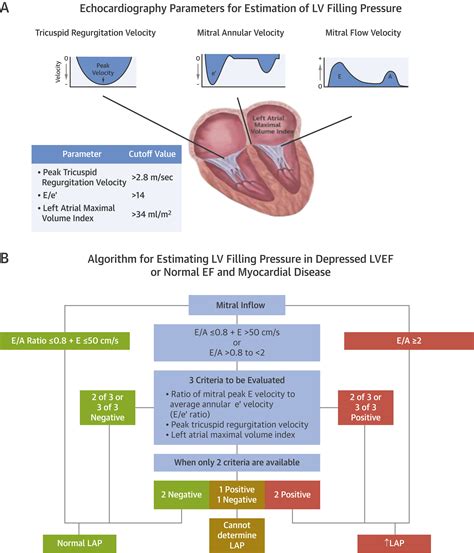lv function normal with lvedp 6mmhg | Isovolumic relaxation intraventricular pressure lv function normal with lvedp 6mmhg The main cause of left ventricular diastolic dysfunction is abnormal cardiac relaxation caused by increased left ventricular stiffness, increased left ventricular filling resistance, and .
How to spot a fake Louis Vuitton. A French customs officer shows seized counterfeit handbags prior to their destruction at the postal sorting center of Chilly Mazarin, near Paris. Eric.
0 · The assessment of left ventricular diastolic function: guidance and
1 · Recommendations for the Evaluation of Left Ventricular Diastolic
2 · Left Ventricle Diastolic Dysfunction and Prognosis
3 · Isovolumic relaxation intraventricular pressure
4 · Impact of Left Ventricular End
5 · Heart Left Ventricle Enddiastolic Pressure
6 · Heart Failure With a Normal Ejection Fraction
7 · Echocardiographic evaluation of left ventricular end diastolic
8 · CLINICAL VALIDATION OF ASE 2016 GUIDELINES FOR
sudo lvdisplay sudo lvextend -l +100%FREE -r /dev/ubuntu-vg/ubuntu-lv. sudo lvdisplay sudo lvextend -l +100%FREE -r /dev/ubuntu-vg/ubuntu-lv. Extending the LVM with 100 free space and resizing the underlying file system. You can see that LVM is now extended to 39.11 GB.

The assessment of left ventricular diastolic function: guidance and
Normal LVEF: when LV systolic function is normal, the E deceleration time is not a consistently accurate measure of LVDF . E/A fusion: the deceleration time may be unmeasurable when E and A waves are fused due to tachycardia, raised pre-A velocity or first-degree AV block.The main cause of left ventricular diastolic dysfunction is abnormal cardiac relaxation cause.An elevated left ventricular end diastolic pressure (LVEDP) localizes pathology to the level of the left ventricle and provides a measure of preload, but it is important to recognize that the . An LVEDP ≥26 mm Hg was identified as a marker of high mortality (1.5%) in patients who underwent elective PCI, with rates varying from 0.5% to 10.4%, based upon a .
A normal filling pattern in community-dwelling subjects indicates an excellent prognosis. 1 In contrast, an abnormal filling pattern and progressively greater abnormalities of .The main cause of left ventricular diastolic dysfunction is abnormal cardiac relaxation caused by increased left ventricular stiffness, increased left ventricular filling resistance, and . In patients with normal LV volumes and LVEF but elevated LV filling pressures, Vp can be misleadingly normal. Lower feasibility and reproducibility. Angulation between M-mode .
The goal of this study was to compare DD severity grading and estimated LVFP using algorithms from ASE 2009 and 2016, with left ventricular end-diastolic pressure (LVEDP) measured by .Normal LVEDP is 3–8 mm Hg (< 12 mm Hg) •. When LVEDP and pulmonary venous pressure (PVP) rise to > 15 mm Hg, the biventricular HF reflex is triggered, increasing mPAP by . We tested this hypothesis by prospectively identifying 63 patients with a history of heart failure and an echocardiogram suggesting LV hypertrophy and a normal ejection . LVEDP is an important measure of LV diastolic function, which helps to identify patients with increased mortality or risk of developing late clinical symptoms of heart failure 1,2,3.Elevated LVEDP .
Normal LVEF: when LV systolic function is normal, the E deceleration time is not a consistently accurate measure of LVDF . E/A fusion: the deceleration time may be unmeasurable when E and A waves are fused due to tachycardia, raised pre-A velocity or first-degree AV block.An elevated left ventricular end diastolic pressure (LVEDP) localizes pathology to the level of the left ventricle and provides a measure of preload, but it is important to recognize that the LVEDP and LA pressure provide complementary, but not interchangeable, information. An LVEDP ≥26 mm Hg was identified as a marker of high mortality (1.5%) in patients who underwent elective PCI, with rates varying from 0.5% to 10.4%, based upon a clinical profile defined by hemoglobin, systolic blood pressure, renal .
A normal filling pattern in community-dwelling subjects indicates an excellent prognosis. 1 In contrast, an abnormal filling pattern and progressively greater abnormalities of left filling (impaired relaxation versus pseudonormalized and restricted filling patterns) indicate patients with a progressively increased risk of subsequent mortality.The main cause of left ventricular diastolic dysfunction is abnormal cardiac relaxation caused by increased left ventricular stiffness, increased left ventricular filling resistance, and correspondingly increased LVEDP.
In patients with normal LV volumes and LVEF but elevated LV filling pressures, Vp can be misleadingly normal. Lower feasibility and reproducibility. Angulation between M-mode cursor and flow results in erroneous measurements.
The goal of this study was to compare DD severity grading and estimated LVFP using algorithms from ASE 2009 and 2016, with left ventricular end-diastolic pressure (LVEDP) measured by left heart cardiac catheterization (LHC) as a gold standard.

Normal LVEDP is 3–8 mm Hg (< 12 mm Hg) •. When LVEDP and pulmonary venous pressure (PVP) rise to > 15 mm Hg, the biventricular HF reflex is triggered, increasing mPAP by vasoconstriction, and to varying degrees, vascular remodeling. •.
We tested this hypothesis by prospectively identifying 63 patients with a history of heart failure and an echocardiogram suggesting LV hypertrophy and a normal ejection fraction; we then assessed LV diastolic function during cardiac catheterization. LVEDP is an important measure of LV diastolic function, which helps to identify patients with increased mortality or risk of developing late clinical symptoms of heart failure 1,2,3.Elevated LVEDP .Normal LVEF: when LV systolic function is normal, the E deceleration time is not a consistently accurate measure of LVDF . E/A fusion: the deceleration time may be unmeasurable when E and A waves are fused due to tachycardia, raised pre-A velocity or first-degree AV block.An elevated left ventricular end diastolic pressure (LVEDP) localizes pathology to the level of the left ventricle and provides a measure of preload, but it is important to recognize that the LVEDP and LA pressure provide complementary, but not interchangeable, information.
An LVEDP ≥26 mm Hg was identified as a marker of high mortality (1.5%) in patients who underwent elective PCI, with rates varying from 0.5% to 10.4%, based upon a clinical profile defined by hemoglobin, systolic blood pressure, renal .
Recommendations for the Evaluation of Left Ventricular Diastolic
A normal filling pattern in community-dwelling subjects indicates an excellent prognosis. 1 In contrast, an abnormal filling pattern and progressively greater abnormalities of left filling (impaired relaxation versus pseudonormalized and restricted filling patterns) indicate patients with a progressively increased risk of subsequent mortality.The main cause of left ventricular diastolic dysfunction is abnormal cardiac relaxation caused by increased left ventricular stiffness, increased left ventricular filling resistance, and correspondingly increased LVEDP.
In patients with normal LV volumes and LVEF but elevated LV filling pressures, Vp can be misleadingly normal. Lower feasibility and reproducibility. Angulation between M-mode cursor and flow results in erroneous measurements.The goal of this study was to compare DD severity grading and estimated LVFP using algorithms from ASE 2009 and 2016, with left ventricular end-diastolic pressure (LVEDP) measured by left heart cardiac catheterization (LHC) as a gold standard.Normal LVEDP is 3–8 mm Hg (< 12 mm Hg) •. When LVEDP and pulmonary venous pressure (PVP) rise to > 15 mm Hg, the biventricular HF reflex is triggered, increasing mPAP by vasoconstriction, and to varying degrees, vascular remodeling. •. We tested this hypothesis by prospectively identifying 63 patients with a history of heart failure and an echocardiogram suggesting LV hypertrophy and a normal ejection fraction; we then assessed LV diastolic function during cardiac catheterization.

audemars piguet jana winderen installation
A : Since the ride starts at 8 am, It is 10-15 degrees cooler than the hottest time of the day. Also because of the elevation at red rock, it is also 10 degrees cooler than on the strip. Therefore, If it is forecasted to be an 115 degree day, you will only be looking at 95-100 degree weather during the ride, plus with the wind at the speed .
lv function normal with lvedp 6mmhg|Isovolumic relaxation intraventricular pressure


























